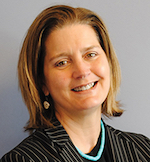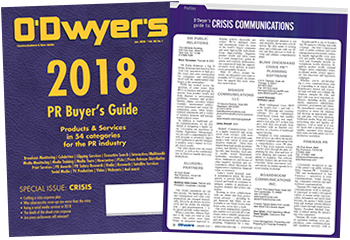|
|
Media reports in the latter half of 2017 were filled with accusations of harassment, intimidation, assault and the resulting resignations, firings and public shaming. In many of these cases, there was nothing lost in translation. The chauvinistic, demeaning and, at times, criminal behavior that has been commonplace in the workplace and in social settings, is now rightfully being called out amidst a societal demand for respect and justice for victims and survivors.
Beyond this overtly bad and crude behavior, there were other, subtle offenses that were called out in 2017: Brands or individuals accused of being insensitive to our ever-changing societal norms as they relate to race, culture and gender. Student activists, LGBTQ culture and a host of other communities are calling offenders out and enforcing accountability for one’s actions on a level never seen before. Miscommunication or poorly chosen words are often at the heart of these case studies in bad PR.
|
|
The headlines
In October, beauty brand Dove was forced to apologize after posting an image on its Facebook page that depicted a woman of African heritage removing her top and morphing into a Caucasian female after supposedly using Dove body lotion. Not captured in these images circulating on social media was the full three-second video they were pulled from, where the white woman subsequently removes her top and turns into a female of yet another ethnicity. The message: Dove celebrates diversity and its products are for all women. Yet Dove was quickly accused of racism, that their Facebook image suggested that a black woman would turn white after using a cleanser. It didn’t matter that the Nigerian-born model who appeared in the ad insisted it celebrated ethnic diversity. Feeling the heat, the brand pulled the images and tweeted that it “missed the mark in representing women of color thoughtfully” rather than taking the time to explain how the images were taken out of context.
The workplace
In the past, equal opportunity employers and/or having a diverse workforce might have been viewed as simply being legally-mandated or, more cynically, as good PR. But that’s no longer the case. Leaders recognize the benefit of having multiple perspectives at the table and of attracting a broader pool of talent for its workforce. For many, it’s just good business. Consider 2016 research from the Peterson Institute of International Economics which revealed that having at least 30 percent female leadership adds six percent to an organization’s net profit margin.
Striking the proper balance of understanding, sensitivity and respect is more challenging than ever. This is where seasoned communications professionals can help navigate this increasingly complex landscape.
Here are 10 tips to keep in mind while communicating internally or externally in today’s diverse world:
Avoid judgments and assumptions. Don’t assume that others share your values and beliefs. Remember, the way we think and communicate are deeply influenced by how we were raised. When people act differently or share an unfamiliar viewpoint, don’t assume they are wrong or that their opinion isn’t valid.
Do your homework. If you’re drafting communications for a community other than your own (e.g. LGBTQ, autism parents or cancer survivors), you should speak to members of that community including activists, writers and teachers. That way you can be assured of communicating in an authentic, credible manner and your words will ring true to those they are intended for.
Always keep victims and survivors top of mind. Assuming their POV when drafting communications will prevent you from hitting any sour notes or sounding tone-deaf. Your communications should always be free of any language that could be construed as “victim shaming.”
Project humanity. Is it more sensitive and aware to describe someone as a “homeless person” or “someone experiencing homelessness?” An individual may not define themselves by their mental illness or physical-cognitive challenges and neither should you. Offer dignity to another whenever possible.
Be accountable. If you or your organization slipped up, own up to it. It could go a long way towards repairing your relationship with the aggrieved party and/or your key audiences. Even if you don’t think you’re at fault, extending sympathies to those who have been harmed or saying “sorry” is not an admission of guilt. It projects humility and compassion.
Use inclusive language. Avoid terms that suggest gender bias. Instead of assuming someone is referred to as a “boyfriend,” you’re better off using “partner.” Instead of “Chairman”, use “Chair” or “Chairperson.” Be up on the latest diversity nomenclature. For example, many well-meaning individuals do not realize that “homosexual” is often considered a derogatory term.
Honor one’s memory or version of events. It sounds like common sense, but it can be a challenge — especially if you’re in the position of defending your organization against allegations it didn’t do enough to protect an employee, manager or student. Yet it’s possible to forcefully defend your organization, its mission and policies without characterizing an individual as a liar or having to be accused of gaslighting them. Confidential investigations or litigation adds an extra level of complexity to this difficult and delicate dance.
Apply the “Golden Rule in Reverse.” Others don’t always want to be treated the way you want to be treated. In today’s world, you must treat people the way they want to be treated. If you’re unclear on expectations, ask.
Make policies and practices visible. Consider the first impression you make on potential donors or clients. Be sure your website and other relevant marketing materials include diverse visuals as well as your nondiscrimination policy.
Realize that “diversity” applies to many groups. These include gender, culture, religion, race, ethnicity, physical and cognitive challenges, sexual orientation and socioeconomic status. Strive for inclusion whenever possible and solicit feedback on your communications from multiple perspectives. This will ensure you are speaking with a voice that is informed and in touch with your community and the culture writ-large.
***
Ashley McCown is President of Solomon McCown & Company, a strategic and integrated communications firm based in Boston with an office in New York.

 Ashley McCown
Ashley McCown 

 There’s a fine line between newsjacking and taking advantage, aka ambulance chasing. Our job as PR professionals is to tread it carefully.
There’s a fine line between newsjacking and taking advantage, aka ambulance chasing. Our job as PR professionals is to tread it carefully. PR firms need to be mindful of ways their work product may be protected by the attorney-client privilege whenever working with a client’s internal legal team or its external legal counsel.
PR firms need to be mindful of ways their work product may be protected by the attorney-client privilege whenever working with a client’s internal legal team or its external legal counsel. Manuel Rocha, former US ambassador and intenational business advisor to LLYC, plans to plead guilty to charges that he was a secret agent for Cuba.
Manuel Rocha, former US ambassador and intenational business advisor to LLYC, plans to plead guilty to charges that he was a secret agent for Cuba. CEO mentoring is an often-overlooked aspect of why CEOs are able to make good decisions, and sometimes make bad ones—all of which intersects with the role and duties of a board.
CEO mentoring is an often-overlooked aspect of why CEOs are able to make good decisions, and sometimes make bad ones—all of which intersects with the role and duties of a board.  How organizations can anticipate, prepare and respond to crises in an increasingly complex world where a convergent landscape of global challenges, threats and risks seem to arrive at an unrelenting pace.
How organizations can anticipate, prepare and respond to crises in an increasingly complex world where a convergent landscape of global challenges, threats and risks seem to arrive at an unrelenting pace.


 Have a comment? Send it to
Have a comment? Send it to 
No comments have been submitted for this story yet.